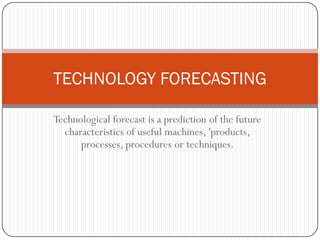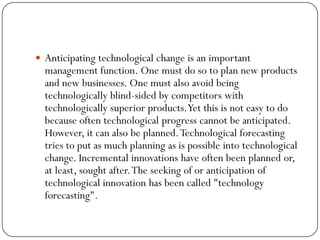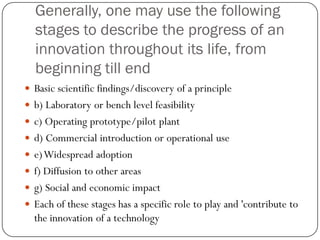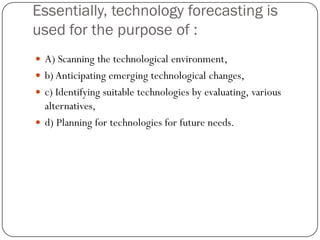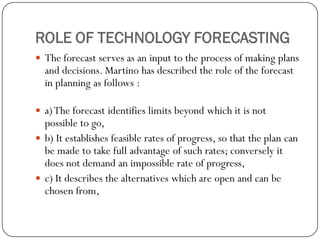The document discusses technology forecasting, including defining it as predicting future characteristics of machines and processes. It outlines stages in a technology's innovation chain from basic research to widespread adoption. Forecasting is necessary for planning and identifying emerging technologies. Forecasts should specify time periods, technologies, characteristics, and probabilities. While forecasts cannot determine the future, they are useful for decision-making by informing planning and identifying alternatives.
